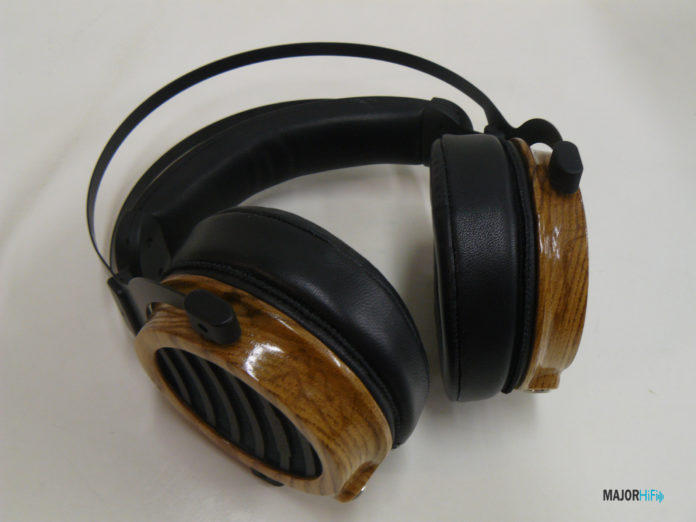It’s time for another Kennerton review. These have been going quite long, but there’s just so much to talk about when analyzing the build and sound signature of their headphones. We’ve taken a look at the Thror and both versions of the Gjallarhorn GH 50, each one proving to be vastly unique while containing an equal amount of resolution and fidelity. The Gjallarhorn impressed me greatly. Its sense of openness appeared unconstrained by its closed-back principle, and the Thror gave me this lush, natural timbre and soothing textures.
The most interesting aspect of both of these models is the fact that you’d expect the Thror to have an even more expansive soundstage than the Gjallarhorn, but that wasn’t the case. Now we’re taking a look at the Thekk, another open-back planar from Kennerton. The price is less than the Thror, coming in at around $3199 or less. It’s still quite an extravagant price but is it worth it as a second option to those interested in a more traditional planar?
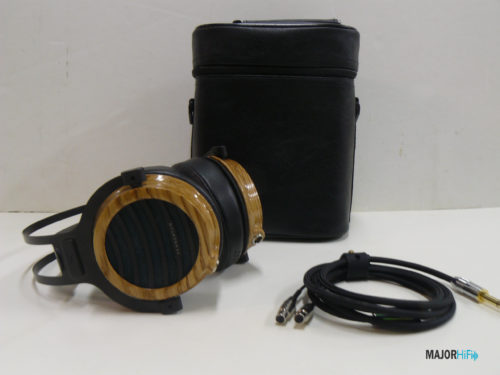
What You Get
- Eco-leather storage case
- 6.3mm OFC cable
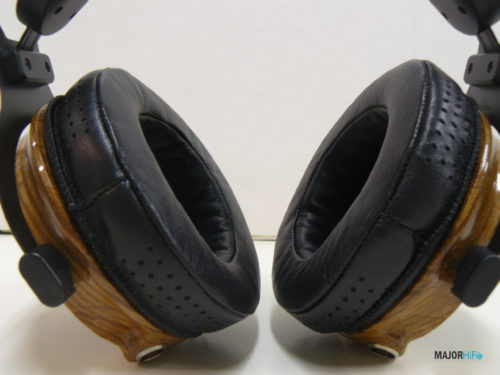
Look and Feel
If there’s anything that’s undeniable about Kennerton headphones, it’s that they all have an extraordinary build quality. They also make sure that each one of their headphones has a unique aesthetic design while still keeping the same stable frame and materials throughout. With that, the Thekk is almost like a combination of the Gjallarhorn and the Thror. The Thekk uses the Gjallarghorn’s exceptional suspension headband. The cups take a lot of inspiration from the Thror, although it’s not as copy and paste as the former comparison.
In its size, the Thekk appears a bit smaller than the Thror’s build but it makes them a touch lighter on the head. The same lambskin pads are used too, supported by Kennerton’s usual wooden housing, specially handcrafted and processed with complexity. Aesthetically, it doesn’t appear as heavy-duty as the Thror, but still offers the same level of durability with aerospace-grade aluminum and steel components. In its fit, the Thekk has the lightness of the Gjallarhorn, mixed with the security of the Thror, which is an excellent combination for an extremely comfortable listening experience.
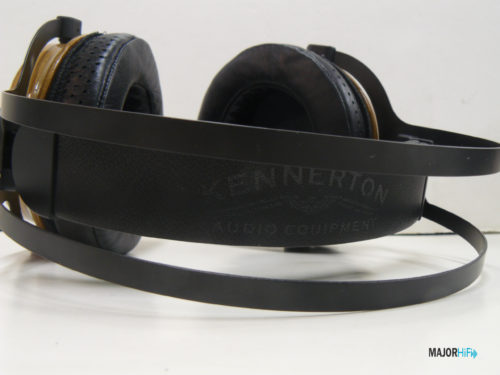
Design
In their interior system design, the Kennerton’s are quite the behemoths. Much of the same materials from the Thror are carried over to the Thekk, like its massive 80mm driver unit complete with a multi-layered, low-mass diaphragm. Planar also makes a return here, which again comes with certain expectations. After hearing the Thror, I’d say those expectations have been firmly set, even knowing what can be done with planar from other manufacturers. That’s not to say that Kennerton doesn’t need planar, but they do have an interesting approach to what they can do with this principle.
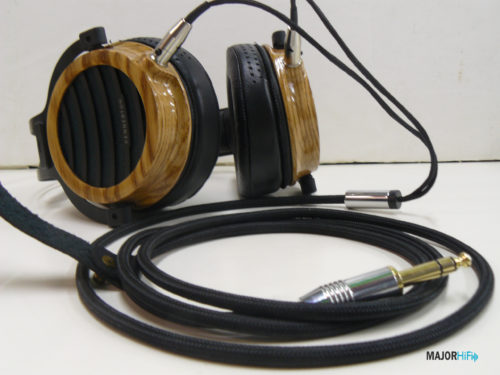
Output
Kennerton has constructed their headphones to be accessible with most portable and desktop systems with a quarter-inch jack. Its low impedance and sensitivity make driving them a breeze, and that’s true for the Thekk as well. Even for a planar, which takes a bit more juice than usual really don’t require much in the way of gain. With the Thekk I can easily achieve a comfortable loudness that never came close to reaching its volume limit.
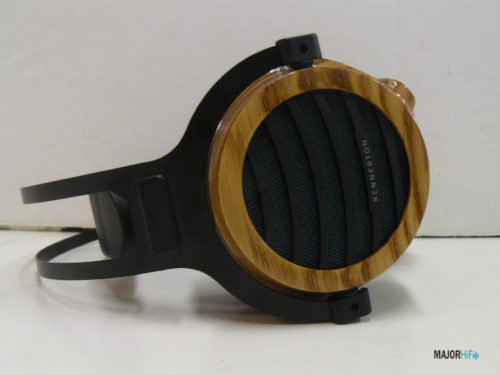
Soundstage
Here’s the moment of truth, where we find out if the Thekk is any wider than the Thror. I showered the Thror with praise, even in sections of the soundstage. When it came down to it though, they just didn’t feel open enough for me despite being an open-back planar headphone. Unfortunately almost the same can be said about the Thekk, however, like the Thror, it still features some great qualities outside of its width. Spatial imaging is kept rather close on the Thekk, providing some more intimate musicality, while also maintaining its sense of accuracy. This also sacrifices a more open headspace, which I feel immerses me more in the sound field.
For most open-back planars, this isn’t the case, but Kenneton only utilizes its principle for depth. However, the sense of depth on the Thekk isn’t as well-realized as it is on the Thror. Separation and layering are still functional, but not as articulate, and fail to realize a more grandiose image. That being said, the overall spaciousness is still enjoyable It strays away from an interior headspace, and performs more of a non-linear output that just brushes the sides of your ears. This sensation replicates being close up to a band at a small concert venue, with the loudspeakers closer to you than you might like.
Low End
If you’re looking for a sizable bass response, with impact and deep resonance, you’re not going to get that with the Thekk. Instead, the Thekk offers a more dynamic and lean tonality, with exceptional clarity. What’s the most surprising here, is that the Thekk actually provides some character to its bass this time around, featuring more thumpy textures that give the timbre a bit more power compared to its natural counterparts.
While the image might not present the most slam, the bass is at its best with more subtle, growling resonances, like in the track “Distant Lights” by Burial. Here the bass sits deeply in your throat, making it perfect for low strings and bass synths that get to properly feel like they’re growing and extending into the sound spectrum.
Mids
The Thekk showcases a very dominant midrange, with an enthusiastic tonality and richness. Instruments and effects appear natural and bodied, making a majority of genres fare with an equal amount of fidelity. Vocals in most registers produce crisp details with emphasis from the low and upper midrange. The Reverb caked piano tones on the album “Nightmare Ending” by Eluvium portrayed an ideal sense of intimacy and fullness that made the album more compelling, especially when the whispery vocals surprise you at the very end.
Highs
Treble can be a little bit of a mixed bag. While there a detailed presence in the high frequencies, the tonality can be very bright and almost piercing. I like to go easy on treble most of the time, but the Thekk might not be as digestible for people who might be sensitive to those frequencies. Some of the details are very nice, especially when listening to ambient music from the likes of Aphex Twin. The first track off of “Selected Ambient Works” brings a rich sizzling high-hat in the very beginning that can be blissful for the ear, but other tracks can have a much harsher resonance.
Summary
This is another Kennerton model that has a unique sound signature but doesn’t exactly deliver on exerting you might expect. The build quality and overall design are still unmatched, and the timbre still feels natural and accurate to the mix. However, this is an even harder sell than the Thror due to its price and sometimes harsh treble response. The Thekk is still an incredibly impressive headphone, but a tough one to properly recommend.
Pros and Cons
Pros: Build quality, Light and Comfortable, Natural mids
Cons: Harsh highs, Tight soundstage, Price
The Kennerton Thekk is available at Audio 46.
Discuss the Kennerton Thekk on our forums here.
Compare the ranking of various headphones, earbuds and in-ear monitors using our tools.
Discuss this, and much more, over on our forum.
---MAJORHIFI may receive commissions from retail offers.


